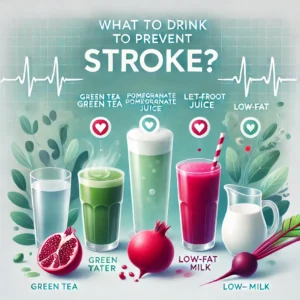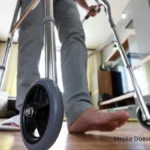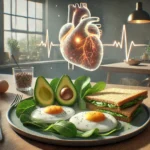When Do Strokes Happen Most? The Riskiest Times Revealed

If you or someone close is worried about facing a serious medical event, you might ask: Are there times of day when risk is higher? Research shows these events often follow patterns linked to natural daily rhythms rather than occurring randomly.
Knowing these patterns can make it easier to notice early warning signs, take preventive action, and possibly save a life. Let’s dive into when these events are most likely to happen and what that means for overall wellness.
Key Takeaways
✔ Morning is the most common time for strokes—especially between 6 AM and noon.
✔ Blood pressure surges, dehydration, and hormonal changes make mornings riskier.
✔ Weekend strokes may be deadlier due to delays in hospital care.
✔ Nighttime strokes often go unnoticed, leading to worse outcomes.
✔ Preventive steps (like monitoring BP and staying hydrated) can lower your risk.
Science Behind Timing: Why Morning Hours Carry Greater Danger
1. Morning Surge Pattern
During early hours after waking, natural physiological shifts can raise chances of serious medical crises.
Blood Pressure Surge: After waking, blood pressure can climb sharply—often by 20–30%—as circulation shifts from rest toward full activity. Such a rapid rise places added strain on arteries and cardiac muscle, creating a period marked by heightened vulnerability.
Increased Blood Viscosity: Overnight, fluid levels can fluctuate, causing blood to thicken and become stickier. This change makes clot formation more likely, which can trigger ischemic events in susceptible individuals.
Stress-Hormone Spike: Cortisol along with other stress-related compounds surges during early-morning hours to ready a person for upcoming activity. Although this response is natural, it also raises heart rate, tightens vessels, and adds extra pressure throughout circulation.
When combined, these factors make early-morning hours a period of heightened danger for incidents such as cerebral crises or other vascular emergencies. Research shows clot-related episodes occur nearly 50% more often during this window, with bleeding-related incidents displaying a similar pattern.
2. Influence of Sleep and Circadian Rhythms
Internal biological clock, often called circadian rhythm, significantly affects risk for serious medical events.
Blood-Pressure Swings: Pressure falls during deep sleep yet climbs rapidly once a person wakes. Such a rebound places sudden strain on arteries along with cardiac muscle.
Platelet Activity Rise: During overnight hours, platelet behavior shifts toward greater stickiness, making blood more prone to clot formation. This change increases chances of ischemic crises shortly after morning begins.
Fluid Loss Overnight: Hours of sleep without fluid intake cause mild dehydration, thickening blood and further increasing chances of clot formation.
Disrupted sleep patterns—common among shift workers or individuals with irregular schedules—disturb natural circadian rhythms. Such disruption weakens built-in protective processes, leaving many more vulnerable to serious vascular crises during high-pressure periods.
Do Strokes Happen More at Night? The Silent Danger
Even though early hours see a high frequency of events, those occurring during sleep carry unique dangers:
Unnoticed Symptoms: While asleep, warning signs cannot be recognized or addressed immediately.
Treatment Delays: Critical window for intervention often passes before anyone can respond, leading to more severe outcomes.
Wake-Up Incidents: Roughly 14–24% of serious events happen overnight, where someone goes to bed without issues but awakens with sudden symptoms.
These factors make nighttime events particularly hazardous, emphasizing importance of awareness and preventive strategies, especially for individuals with elevated risk.
Key risk factors for nighttime strokes:
✔ Sleep apnea (interrupts oxygen flow, increasing clot risk).
✔ Uncontrolled high blood pressure.
✔ Atrial fibrillation (AFib) (irregular heartbeat can cause clots).
Weekends vs. Weekdays: Is There a Difference?
Research indicates that serious events happening on weekends or holidays can carry greater danger due to several factors:
Slower Hospital Response: Fewer specialists on call may lead to delays in critical intervention.
Delayed Action: Individuals might postpone seeking assistance, assuming symptoms will pass.
Lifestyle Factors: Activities such as excessive alcohol consumption, dehydration, or missed medications can increase vulnerability.
One study published in a journal focused on cerebrovascular research reported that incidents arising on weekends raised chances of death by 26% compared with incidents during weekday periods.
Seasonal Trends: Do Strokes Happen More in Winter?
Lower temperatures can raise chances of serious incidents for several reasons:
Vessel Constriction: Blood vessels tighten in cold conditions, increasing pressure within them.
Higher Illness Rates: Flu and respiratory infections can trigger inflammation, making clots more likely.
Reduced Movement: Colder weather often leads to less activity, slowing circulation.
A study published in European Journal of Epidemiology found that incident rates rise by 11% during winter months compared to summer.
How to Protect Yourself Based on These Patterns
Morning Protection Tips:
✔ Check your blood pressure right after waking (if you’re at risk).
✔ Stay hydrated (drink water before bed and upon waking).
✔ Take meds as prescribed (especially blood thinners or BP meds).
Nighttime Prevention:
✔ Treat sleep apnea (CPAP machines reduce stroke risk).
✔ Avoid alcohol before bed (dehydration thickens blood).
✔ Sleep on your side (may improve circulation vs. sleeping on your back).
General Prevention:
✔ Exercise regularly (even light walking helps circulation).
✔ Eat a heart-healthy diet (Mediterranean diet is proven to lower stroke risk).
✔ Know the FAST warning signs:
Face drooping
Arm weakness
Speech difficulty
Time to call 911
Final Thoughts: Timing Matters, But Prevention Matters More
Mornings are often when serious events occur most frequently, but daily habits play a bigger role than time of day. Being aware of patterns—like morning pressure spikes or delayed responses at night—can guide safer choices and reduce risk.
For individuals in higher-risk categories, such as those with high blood pressure, AFib, or a prior history of similar events, consulting a medical professional about personalized prevention strategies is crucial. Every minute matters, no matter when an event happens.
Did You Know?
80% of these events are preventable with lifestyle changes.
Women are more likely to experience unusual symptoms (like sudden hiccups or nausea).
These events are on the rise in young adults (under 45), often linked to obesity and high blood pressure.
Stay informed, stay proactive, and share this knowledge—it could save a life.
FAQs
Impact of Daylight Saving Time
Studies show a short-term rise in serious incidents, especially ischemic varieties, during two days after clocks move forward and one hour of sleep disappears. Disturbed internal rhythms paired with sleep loss can push blood pressure higher and intensify inflammation. Levels usually settle back to normal within roughly one week.
Practical Tip: Individuals with pronounced contributing factors should maintain steady sleep routines before and after clock adjustments to lessen vulnerability.
Exercise and Risk Timing
Consistent movement lowers long-term odds of serious issues, yet intense exertion—such as heavy lifting, sprinting, or long-distance running—can briefly raise chances, especially for individuals with uncontrolled high pressure or unnoticed aneurysms.
Severe events may occur during vigorous activity due to sudden spikes in pressure, while others happen afterward because of dehydration or thicker blood.
Safety Measures: Stay hydrated, perform proper warm-ups, and avoid exceeding personal limits if cardiovascular concerns exist.
Holidays, Stress, and Elevated Risk
Research indicates a 10-20% increase in serious events during major holidays or stressful occasions. Contributing factors include:
Delays in seeking medical attention, assuming symptoms will pass.
Consumption of high-sodium or rich foods, causing pressure spikes.
Excessive alcohol use leading to dehydration and irregular heart rhythms.
Emotional stress elevating pressure levels.
Studies in Journal of American Heart Association show more severe incidents on December 25, 26, and January 1 compared to other days.
Effects of Sudden Weather Changes
Rapid temperature shifts and extreme heat increase incidence rates.
Cold spells: Blood vessels tighten, raising pressure.
Heat waves: Dehydration and thicker blood heighten clot formation risk.
Research published in Stroke journal reports hospitalizations increased by 34% during extreme temperature periods.
Preventive Measures: Dress in layers during cold periods and stay hydrated with light clothing during hot weather.
Influence of Seasons and Lunar Events
No scientific evidence links full moons to elevated risk. Seasonal shifts, however, do play a role:
Winter: Rates increase due to cold conditions, higher illness prevalence, and reduced physical activity.
Summer: Severe cases may rise due to heat stress.
Observational studies in Sweden found peak incident times around 11:00 AM, largely independent of season.




